Get a low cost access to TINACloud to edit the examples or create your own circuits
The magnitude of current flowing in a circuit is dependent upon both voltage and resistance. The relationship among these three electrical properties (current, voltage and resistance) is the important and well-known Ohm’s law, which states that the current flow in a circuit is directly proportional to the applied source voltage and inversely proportional to the resistance of the circuit.
In mathematical form:

or

In the following examples, we generally give three solutions for each problem.
- Numerical solution by TINA
- Solution by TINA’s Interpreter, using Ohm’s law
- Solution by formulas using Ohm’s law
Example 1
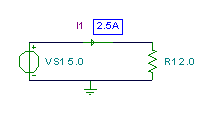

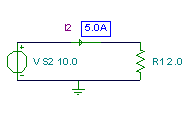

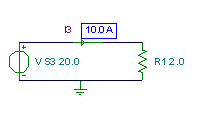

Using Ohm’s law:



The calculated currents confirm that current is directly proportional to the source voltage.
I1:=VS1/R1;
I1=[2.5]
I2:=VS2/R1;
I2=[5]
I3:=VS3/R1;
I3=[10]
I1=VS1/R1
I2=VS2/R1
I3=VS3/R1
print(I1,I2,I3)
Example 2
In the following example, you can verify that the current is inversely proportional to the resistance.
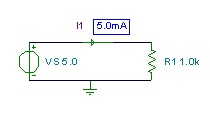

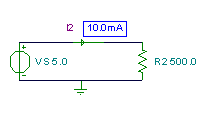

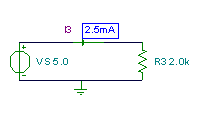

Using Ohm’s law:



I1:=VS/R1;
I1=[5m]
I2:=VS/R2;
I2=[10m]
I3:=VS/R3;
I3=[2.5m]
I1=VS/R1
I2=VS/R2
I3=VS/R3
print(I1,I2,I3)
Example 3
In this example, you can see that the voltage across a resistor is directly proportional to the value of its resistance.






While the detailed formula isn’t shown, it is used in TINA’s Interpreter to evaluate the example.
V1:=IS1*R1;
V1=[10]
V2:=IS1*R2;
V2=[20]
V3:=IS1*R3;
V3=[30]
V1=IS1*R1
V2=IS1*R2
V3=IS1*R3
print(V1,V2,V3)
Example 4
In this example, you can check that the voltage across a resistor is directly proportional to the current flowing through the resistor and to the resistor’s resistance.
While the detailed formula isn’t shown, it is used in TINA’s Interpreter to evaluate the example.
V1:=IS1*R1;
V1=[10]
V2:=IS2*R1;
V2=[20]
V3:=IS3*R1;
V3=[50]
V1=IS1*R1
V2=IS2*R1
V3=IS3*R1
print(V1,V2,V3)


